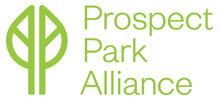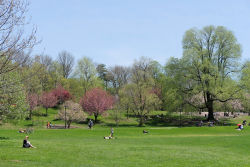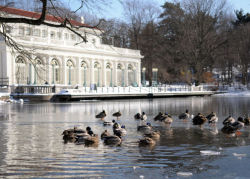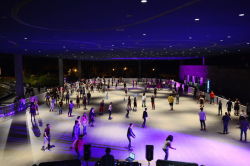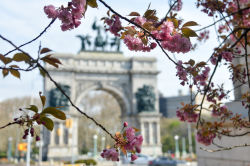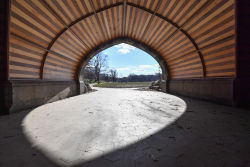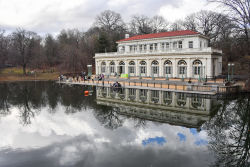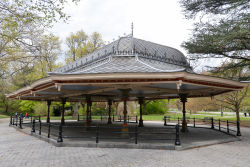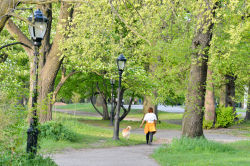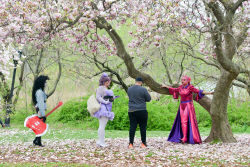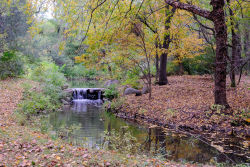Prospect Park
Prospect Park - the Wetlands of New York City
New York City once contained 224,000 acres of freshwater wetland. This valuable ecosystem can slow erosion, prevent flooding by retaining storm waters, filter and decompose pollutants, and slow global warming by converting carbon dioxide into oxygen at a prodigious rate. In the past 200 years, the increasing demands of a growing metropolis have resulted in most of this land being filled for construction, or dredged for transport. Only 2,000 acres of freshwater wetland remain in the City today, and many species that once called the wetland home have been lost forever.
Frederick Law Olmsted (1822-1903) and Calvert Vaux (1824-1895) included an intricate network of wetlands in their design for Prospect Park. Collectively named the Watercourse, the park’s aquatic features include the Ravine, Lullwater, Pagoda Pond, Swanboat Lake, and the 60-acre Prospect Lake. These wetlands emerged from a combination of park design and ice age glacial terrain.
A massive ice sheet called the Wisconsin Glacier advanced on New York City 75,000 years ago, pushing rock, soil, and boulders ahead. When the ice melted 17,000 years ago, water flowed to the sea, creating streams and rivers that carved through rock. Large glacial fragments broke off, melted, and left depressions called kettles. If layers of fine silt and clay were deposited on the bottom of the depressions, the kettles collected water and ponds formed. Where waters were shallow or flowed slowly, seeds and spores were able to take root and flourish. Generations of plants grew and decomposed, building peat-rich sediments. As wind and water eroded the soil, the steep slopes grew gentler, slowing the passage of water. Plant communities diversified under these favorable conditions, attracting animals that fed on the plants. The sophisticated food web that developed brought advanced predators to the wetlands: snapping turtles (Chelydra serpentina), wolves (Canis lupus), several species of hawks, and humans (Homo sapiens).
Water levels in wetlands are variable, influenced by the underlying rock and soil makeup, rainfall, season, and ground water inputs. Despite these variable conditions, freshwater wetlands teem with life. Vegetation ranges from plants that float on the water’s surface, such as watermeal (Wolffia), to trees of the upland swamp forest, like red oak (Quercus rubra) and silver maple (Acer saccharinum). Freshwater wetlands are critical habitat for native wildlife, providing breeding grounds for amphibians like the spotted salamander (Ambystoma maculatum), which spends one or two years in the water before emerging as an adult. Wood frogs (Rana sylvatica), spring peepers (Pseudacris crucifer), and Fowler’s toads (Bufo woodhousei fowleri) also breed in kettle ponds, filling the woods with their courtship songs in spring.
Pagoda Pond, near the Nethermead, hosts swamp azalea (Rhododendron viscosum), sweet pepperbush (Clethra alnifolia), and other species that perfume the air and provide habitat for nesting birds. Though common reeds (Phragmites australis) crowd out cattail in the silted shallows, the area still resembles wet meadow and shrub swamp. The terrace of the Boathouse offers a view of the Lullwater, where mallards (Anas platyrhynchos) paddle through the high grasses to the open water. Black-crowned night herons (Nycticorax nycticorax) roost in the willow trees (Salix alba). The open water of the Lake is home to many familiar and exotic species of birds, from American wigeons (Anas americana) to coots (Fulica) and pied-billed grebes (Podilymbus podiceps).
In addition to housing these native species, freshwater wetlands also provide resting, breeding, and feeding grounds for hundreds of thousands of migrating birds. Many of these birds arrive in New York City only twice a year as they travel along the Atlantic flyway, a major migratory route.
Check out your park's Vital Signs
Clean & Safe
Green & Resilient
Empowered & Engaged Users
Share your feedback or learn more about how this park is part of a
Vital Park System

